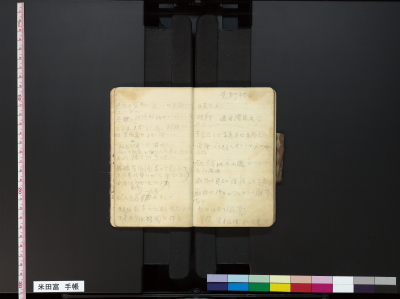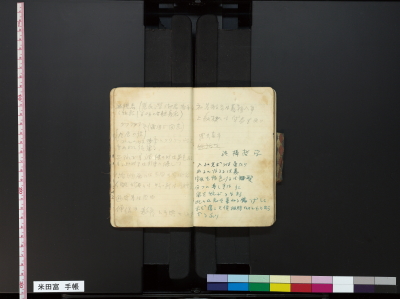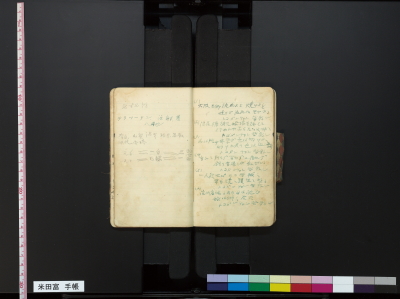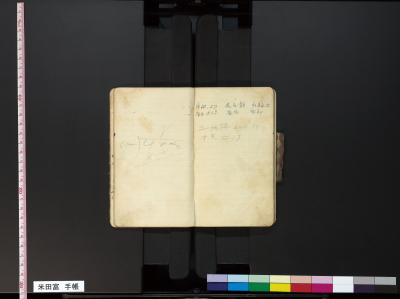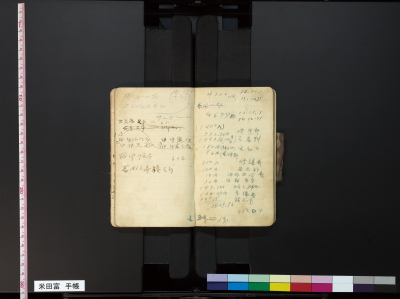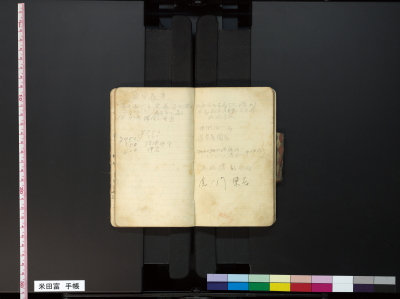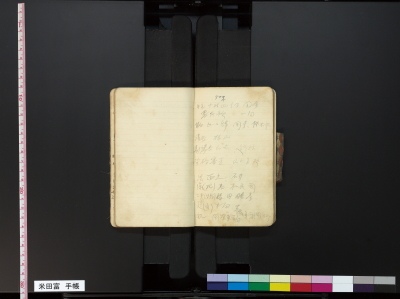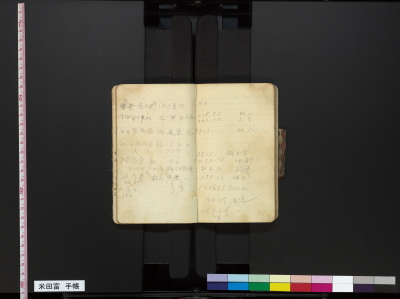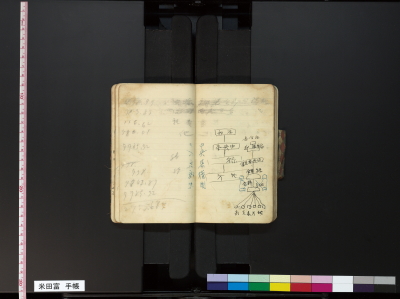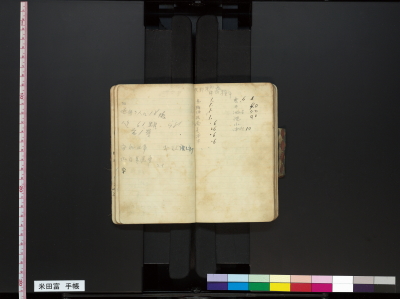Pocketbook of YONEDA Tomi (1924)
YONEDA Tomi, one of the founders of the Zenkoku Suiheisha, recorded how
and by whom the Hyeongpyengsa was created as well as what cases of discrimination
the former Baegjeong had faced in his diary for the year 1924.
According to his records, the Hyeongpyengsa was not well-organized compared to the Zenkoku Suiheisha and the police was tolerant in terms of the control over the organization because the authorities welcomed strife among the Korean people. He also wrote that, although a wealthy person who belonged to the former Baegjeong provided support for the construction of a school, his child was denied admission into the school. This incident led to the creation of the Alliance to Seek for the Establishment of the Hyeongpyengsa for the Liberation of the former Baegjeong in April 1924, initiated by Kang Sangho and Jang Jipil. He also noted the address of IHARA Hisashige of the Oita Prefectural Suiheisha, who lived in Seoul at the time, and referred to the assault on the Hyeongpyengsa (the Jecheon incident) in September 1923 and how the organization broke up after the incident. He stated that Jang Jipil was a graduate of the Meiji University in Japan and wrote down the name of Kim Gyeongsam, who came to Japan in September 1924 for establishing solidarity with the Zenkoku Suiheisha.
It is evident that his strong interest in the Hyeongpyengsa formed the foundation of the exchanges and solidarity between the two organizations.
[ BACK | 01 | 02 | 03 | 04 |
05 | 06 | 07 | 08 | NEXT ]
According to his records, the Hyeongpyengsa was not well-organized compared to the Zenkoku Suiheisha and the police was tolerant in terms of the control over the organization because the authorities welcomed strife among the Korean people. He also wrote that, although a wealthy person who belonged to the former Baegjeong provided support for the construction of a school, his child was denied admission into the school. This incident led to the creation of the Alliance to Seek for the Establishment of the Hyeongpyengsa for the Liberation of the former Baegjeong in April 1924, initiated by Kang Sangho and Jang Jipil. He also noted the address of IHARA Hisashige of the Oita Prefectural Suiheisha, who lived in Seoul at the time, and referred to the assault on the Hyeongpyengsa (the Jecheon incident) in September 1923 and how the organization broke up after the incident. He stated that Jang Jipil was a graduate of the Meiji University in Japan and wrote down the name of Kim Gyeongsam, who came to Japan in September 1924 for establishing solidarity with the Zenkoku Suiheisha.
It is evident that his strong interest in the Hyeongpyengsa formed the foundation of the exchanges and solidarity between the two organizations.
[ BACK | 01 | 02 | 03 | 04 | 05 | 06 | 07 | 08 | NEXT ]
